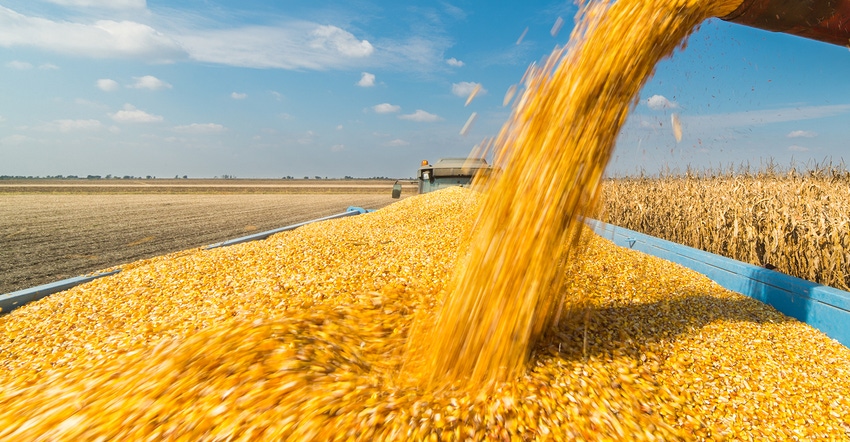August 18, 2017

Harvest calibration is an important task for any operation, and while companies are working on ways to make it easier, there are some things farmers can do themselves to improve accuracy.
For many, the core of the harvest calibration is the grain cart with a scale. During a recent event for Ag Leader, the company talked about this method and offered tips for boosting accuracy.
Ryan Oehler, territory manager, Ag Leader, pointed out what farmer should first know about how grain carts take those measurements.
"There are three-point and five-point systems," he explained. "We have found the five-point systems are more accurate."
A three-point system — with a single-axle cart — has a load cell on each end of the axle and one on the tongue. A five-point system has two points of measurement at each end of the axle: one ahead and one behind, along with a load cell on the tongue. With more points for measurement, accuracy can be higher.
Roger Zielke, product manager, Ag Leader, noted that the five-point system is more accurate, but added that it is possible to get an accurate reading with a three-point system. Of course, you need to be more diligent.
Here are some tips:
1. Be on level ground. You want that cart on level ground to make sure that the load sensors in the cart read the entire load more accurately.
2. Do not unload on the go. The cart should be parked. Bring the calibration load to the cart for improved accuracy.
3. An empty cart is important. It may sound like common sense, but make sure the auger and cart are completely empty before dumping the calibration load
4. Think center. When you pull up to the cart, make sure the unloading auger is centered, dumping the load evenly. The front-to-back variation in the load can change the reading as much as 2%. "That 2% on a 200-bushel-per-acre yield is a big difference," Zielke said.
Zielke noted that you want to be sure your cart is also measuring weight accurately before you calibrate. The gold standard is that weigh wagon your seed dealer has — and if you can get one, that's the best tool for harvest accuracy. He noted that farmers can check their cart accuracy by taking a load to town and weighing at the local elevator, where scales are required by law to be accurate.
About the Author(s)
You May Also Like






